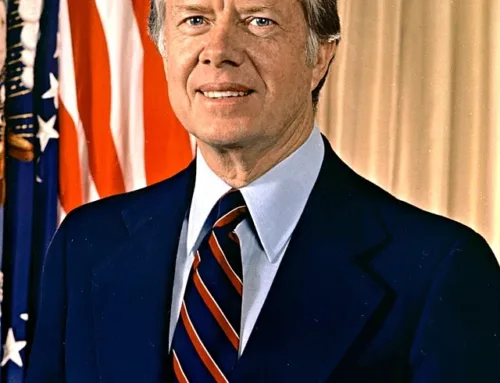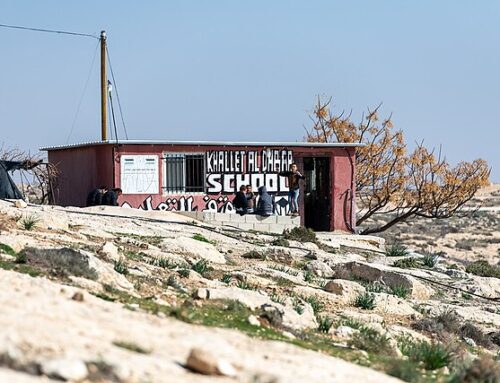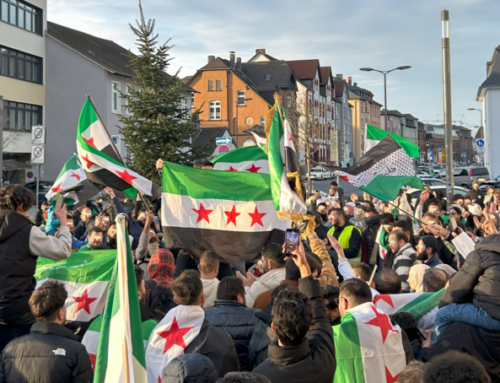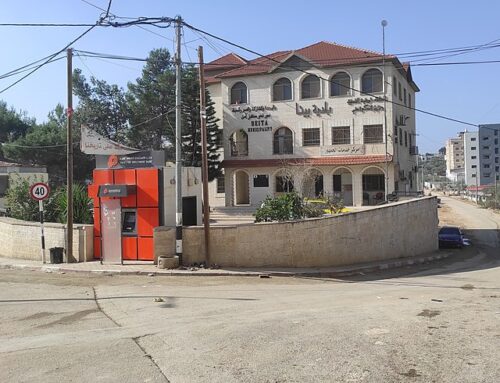Happy Easter Monday! Today, Easter Monday is exactly 100 years since the Easter Monday rebellion in Dublin in 1916, when a small group of Irish nationalists took over the General Post Office building and several other sites in Dublin and proclaimed an Irish republic. The rebellion only lasted six days before it was brutally suppressed by the British, with heavy loss of life. But the rebellion was the spark of a bloody war that after much bloodshed, in 1922, led to Irish independence.
And about a year and a half later, on November 2, 1917, the British government issued the Balfour Declaration, promising to “look with favor” on the establishment of a “Jewish homeland” in Palestine. Both the Easter Monday rebellion and the Balfour Declaration, are, of course, a product of the upheavals of World War I. Ireland was England’s first overseas territorial conquest; Palestine, when General Allenby swept out the Ottoman Empire, would be just about be Britain’s last. There has been speculation that part of the impetus for the Balfour Declaration was to sway American public opinion, and win back some of the support the British had lost in the United States due to its brutal war in Ireland.
The Irish and the Jews. Two peoples that in different ways, lived on the margins of European society in the 19th century, and two peoples that over the course of the 20th century, experienced the beauty and tragedy of national rebirth. And two diasporic peoples that found in the United States a haven, a place where they were more or less welcome. In large cities the Jews and the Irish lived in close proximity, and in America enjoyed the opportunities America provided to build stable and prosperous lives for themselves, in ways that were impossible in their home countries.
Irish and Jewish nationalism are closely entwined. Both movements relied on their American diasporas to provide crucial support, financial, political, and otherwise, to their causes. And when Zionism, despite its crucial boost from Lord Balfour, later turned against the British, the Irish were more than willing to assist. Paul O’Dwyer, the former president of the New York City council, was not the only Irish nationalist to see gun running for the IRA and the Zionists as two parts of a single cause.
The birth pangs of national rebirth are often painful, and so it proved for both Ireland and Israel. Ireland gained a measure of independence in 1922, but only for 26 counties; the other six were put together in a new sub-country, Northern Ireland, nicely gerrymandered to provide a (bare) Protestant majority. This the Republicans in the south never accepted, but they really had no choice. Most readers of this post will be familiar with the territorial complexities of Israel’s creation, from the 1947 Partition Plan, Israel’s independence in 1948, to the Armistice lines of 1949.
And so things stood until the late 1960s. Israel greatly deepened its problems with its Palestinian minority by capturing East Jerusalem, the West Bank, and Gaza in 1967. And in 1969, a demonstration for Catholic civil rights in Northern Ireland, which had been run as a Protestant fiefdom exploded in violence, and a triangular war between Catholics, Protestants, and the British lasted for decades, known as “ the troubles.” It’s a good name for what happened to Israel after 1967 too. Israel’s territorial expansion in 1967 was followed by another war in 1973, problems with Palestinian paramilitary forces, a disastrous Israeli invasion of Lebanon in 1982, the first intifada in the late 1980s, the brief shining moment of hope called Oslo, soon blotted out, and another invasion of Lebanon, another intifada, two invasions of Gaza, and so on and so on.
In the 1970s, 80s, and much of the 90s, a common pastime among me and
my friends was debating whether Israel or Ireland would be the first to solve its problems. A lot of the smart money was on Israel. In Israel there was a relatively straightforward way of solving the territorial problem, a return to the pre-1967 boundaries, or something close to them. And Israel was able to make peace agreements with Egypt and Jordan. In Ireland there was a choice between a permanent Catholic minority in Northern Ireland, or a permanent Protestant minority in a 32-country Republic. There was no way of finessing the issue. And, no insult to Ireland intended, it was sort of a backwater, with relatively little broader political or economic significance, the Hatfields and the McCoys shooting it out in the holler. While Israel, in the catbird seat of Middle East turmoil, was connected to oil embargos and the immensely complicated and turbulent geopolitics of the Middle East. And one way to lower the temperature was for the Israelis and Palestinians to reach an accommodation, and with enough pressure from the United States and its allies, and the Soviet Union and Russia and its allies, surely Israel and the Palestinians could be persuaded to cut a deal.
That is of course is not what happened. In 1998 the Irish Republic, Northern Ireland, Britain, with a strong assist from the United States, forged the Good Friday Agreement, which has, in the intervening years brought a degree of stability to Ireland. It is not perfect, and not without its flaws, but the peace has held.
And so the question is, why Ireland and not Israel? There’s no one answer. People had grown disgusted of the violence. The Republic wanted to curb the IRA. Britain wanted to cut its losses. And there was a plausible alternative. But perhaps the biggest difference is that the Irish, Protestants and Catholics, in the Republic and in the North, realized what they had in common was more important than their very real differences. And once they realized what they shared, they could agree to separate. Catholics could accept that Northern Ireland would always remain part of Britain. And Protestants could accept that whatever the constitutional arrangements were, Northern Ireland would always be in some sense part of Ireland.
And this is a lesson that the Israelis and Palestinians need to learn; in order to separate, they need to recognize what they share. In order to form two countries, they must first recognize that they are deeply joined together. No one knows how this will, or even if, it will happen. (One thing we do know is that if it happens it won’t be called the “Good Friday Agreement.”) The Good Friday Agreement was a crucial, essential stage in the evolution of the Irish nation. To truly realize national independence, you must be at relative peace with your neighbors.
The Easter Rising of 1916 was one of the central events of the 20th century. But I would rather celebrate the Good Friday Agreement. The best-known literary product of the Rising was William Butler Years poem, “Easter, 1916” with its famous ending:
I write it out in a verse —
MacDonagh and MacBride
And Connolly and Pearse
Now and in time to be,
Wherever green is worn,
Are changed, changed utterly:
A terrible beauty is born.
Let’s honor the martyrs. But I have never much cared for a poem that romanticizes violence. Wars are never beautiful, just terrible. Peace agreements need poems too, like the 1998 Good Friday Agreement, and the future agreement between the Palestinians and Israel. And if Yeats was still around, and was, embarrassingly, reduced to my mediocre level of poetic talent, it might go something like this:
Everything is changed, changed utterly
(Well almost everything, because nothing changes utterly,
and we haven’t heard the last of old animosities)
And with our new agreement
A terribly inconclusive beauty has been born.
And we can only cross our fingers
and hope that it will last
And that the good will that has been created
will not be utterly dissipated
in bad faith in the days ahead.
And if it lasts,
that will be the true beauty.
But listen, you poets
Start writing your odes
And tell us that the sacrifices we make for peace
are as worthy of poetical treatment
As the sacrifices we make for war.
And on the 100th anniversary of the Easter Monday Rebellion, and as we near the 99th anniversary of the Balfour Declaration, here’s hoping real poets will laud in verse a real peace between Israel and Palestine.






I was interested to read your comments about Ireland. I am a second generation Irish woman who was active in the UK in Irish politics from the 80s-2000. As part of the Irish in Britain Representation Group I was part of a radical community group that called for equal rights for the Irish in Britain as well as lobbying for all Irish people to be involved in a peace process on the island of Ireland. And whilst through the Good Friday Agreement there was an end to the war what we didnt get is any real just settlement. The Brits still run the N. Ireland state and can pull the plug on the Assembly if they don’t like what is going on. The politicians in power, Sinn Fein and the Unionists run the state but there is little progress in terms of dealing with the inequalities in terms of the poor and in fact they have both agreed to bring in swingeing public service cuts as well as cheap tax deals for the rich. There are bombs going off from dissident republicans and little sign of any progressive politics. Irish people are still emigrating from both parts of the island, not to England or the USA but to Australia. The Irish government’s celebration of the Easter Rising might have looked good on television but excluded from it are the groups that are really suffering in this neo-liberal state; the children in emergency care, the homeless and trade unionists trying to hold onto their jobs. For me, the fact that there is a growing anti-austerity alliance in, at least the south of the Ireland, is a hopeful sign and one that James Connolly would recognise as a true inheritance of the hopes and dreams of the women and men who fought for a true socialist state in 1916.